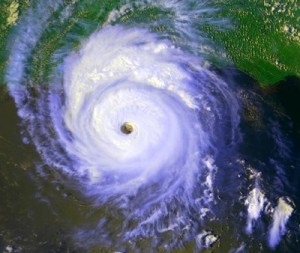Navy Research Paper: ‘Disrupt Economies’ with Man-Made ‘Floods,’ ‘Droughts’
 A recently-unearthed U.S. Navy research project calls for creating mad-made floods and droughts to “disrupt [the] economy” of an enemy state.
A recently-unearthed U.S. Navy research project calls for creating mad-made floods and droughts to “disrupt [the] economy” of an enemy state.
“Weather modification was used successfully in Viet Nam to (among other things) hinder and impede the movement of personnel and material from North Viet Nam to South Viet
Nam,” notes a Naval Air Warfare Weapons Division – China Lake research proposal, released last month through the Freedom of Information Act. But “since that time military research on Weather Modification has dwindled in the United States.”
The proposal suggests a study of the latest weather manipulation techniques, to “give the U.S. military a viable, state-of-the-art weather modification capability again.” With that in hand, American forces would be able…
To impede or deny the movement of personnel and material because of rains-floods, snow-blizzards, etc.
(2) To disrupt economy due to the effect of floods, droughts, etc.
The proposal is undated. But it’s pretty clearly from the Cold War.
Not only is “the Soviet Union (Russia)” mentioned. The money is also relatively small, by today’s standards — less than a half-million dollars, over two years.
A military in-house newspaper calls “weather modification” an “area of China Lake preeminence. Between 1949 and 1978, China Lake developed concepts, techniques, and hardware that were successfully used in hurricane abatement, fog control, and drought relief. Military application of this technology was demonstrated in 1966 when Project
Popeye was conducted to enhance rainfall to help interdict traffic on the Ho Chi Minh Trail.” (Here’s a picture of China Lake’s “Cold Cloud Modification System.”
In 1980, the United States ratified a treaty banning military weather manipulation. But every once in a while, someone in the armed forces floats the idea of doing it again. “Our vision is that by 2025 the military could influence the weather on a mesoscale [theater-wide] or microscale [immediate local area] to achieve operational capabilities,” a 1996 Air Force-commissioned study reads.

